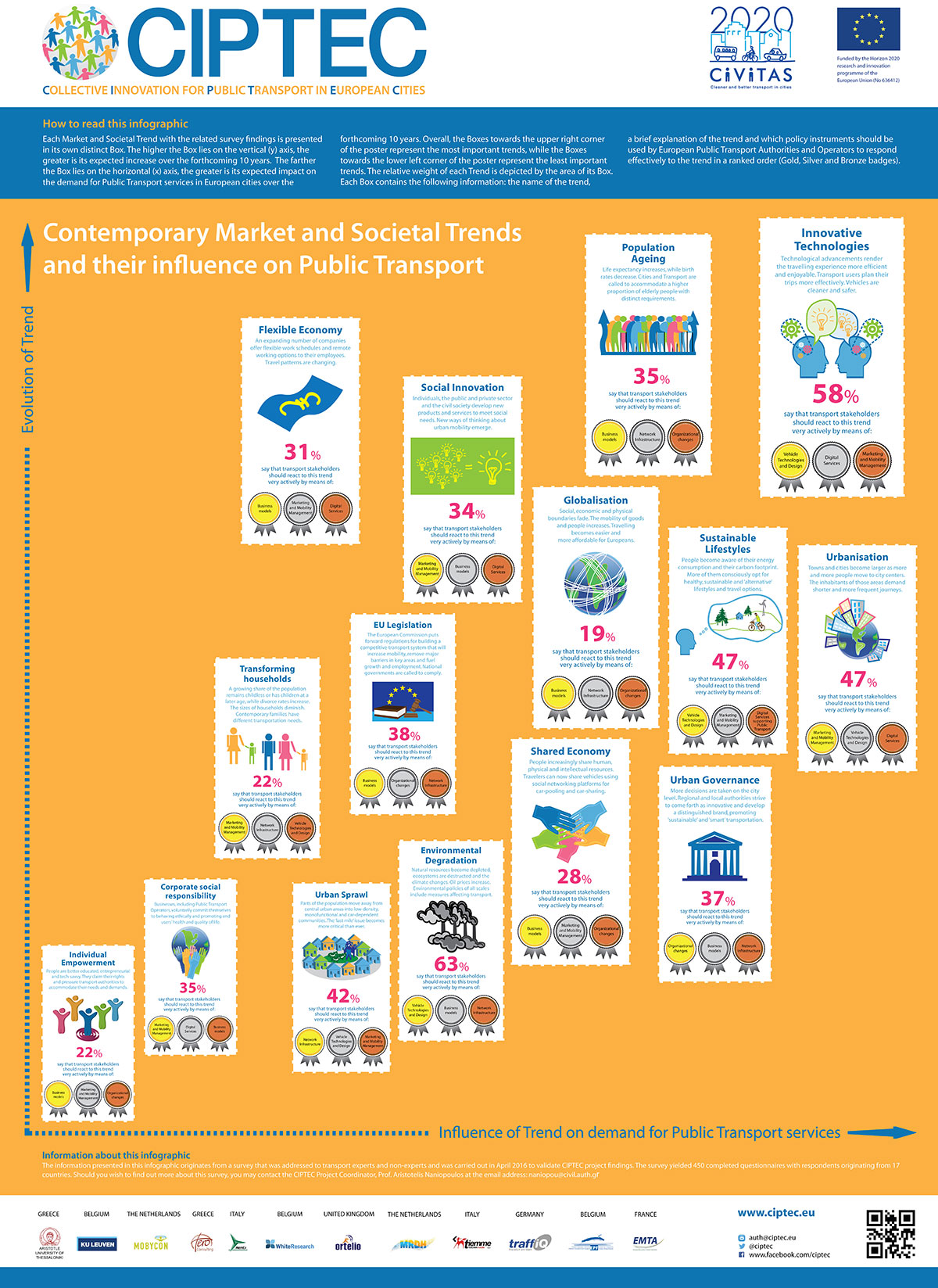During March and April 2016, CIPTEC coordinator AUTh, commissioned a survey about CIPTEC project findings of current market and societal trends, which are bound to influence the demand for public transport services as they evolve. The survey yielded 450 completed questionnaires with respondents originating from 17 countries.
After the analysis of the survey, the findings were summed up in a poster.
The poster depicts a plot with “evolution of trend” on the y-axis (vertically), and “influence of trend on demand for public transport services” on the x-axis (horizontally), showing a combined growth of “evolution” and “demand” for each trend (the higher and more to the right a trend is, the more its evolution and influence for Public Transport services will respectively be). In addition, within each trend, the percentage of the experts that think transport stakeholders should react “very actively” towards the trend and the top three policy instruments that should be used by them in order to respond effectively and take advantage of the trend’s evolution and demand are presented.
Medals are assigned to those policy instruments, showing the importance of use of each one (“gold medal” for the most important tool, “silver medal” and “bronze medal” for the second and third important tools respectively).
For example, looking at two trends and how the information of the plot should be interpreted; In terms of results, 58% of the interviewees believe that Public transport stakeholders should react “very actively” concerning “Innovative and affordable technologies”, which according to its place in the diagram will increase most significantly within the following ten years and influence the demand for public transport services a great deal.
The tools to be used by transport stakeholders in order to respond effectively to this trend are, in the first place, “Vehicle Technologies and Design”, in the second place, “Digital Services”, and in the third place, “Marketing and Mobility Management”. Secondly, 47% of the interviewees, believe that public transport stakeholders should react “very actively” concerning the trend “Urbanisation”, which according to its place in the diagram will not increase significantly within the following ten years, but will make the demand for public transport services increase most than any other trend. The tools to be used in order to respond effectively to this trend are, in the first place, “Marketing and Mobility Management”, in the second place, “Vehicle Technologies and Design”, and in the third place, “Digital Services”.

